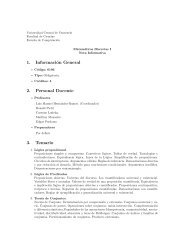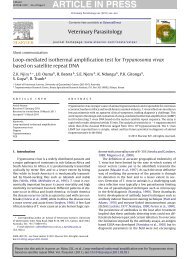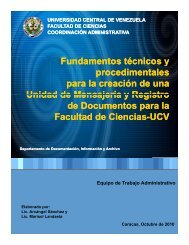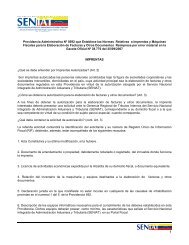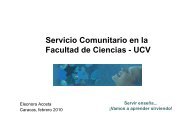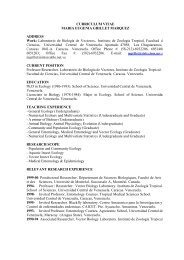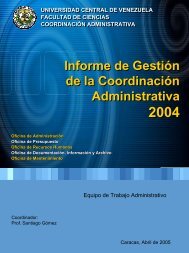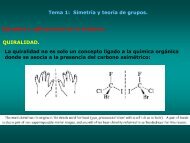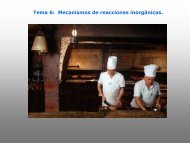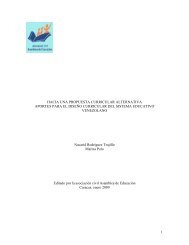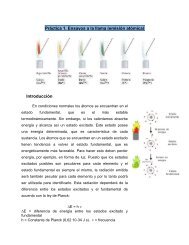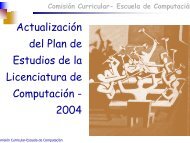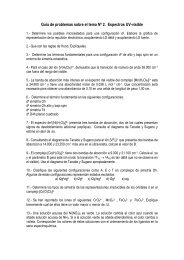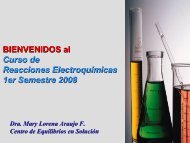Collecting and Preserving
Collecting and Preserving
Collecting and Preserving
- No tags were found...
You also want an ePaper? Increase the reach of your titles
YUMPU automatically turns print PDFs into web optimized ePapers that Google loves.
To kill pests that are actively damaging a collection,you may need to use a liquid fumigant, which acts morerapidly than solid fumigants. Examples of liquid fumigantsare carbon disulfide, carbon tetrachloride, chloroform,ethyl acetate, <strong>and</strong> ethylene dichloride. Because liquidfumigants volatilize rapidly, may be flammable, <strong>and</strong> aretoxic to humans, use extreme care. Work outdoors ifpossible <strong>and</strong> use some kind of fumigation chamber. A largeplastic bag will serve this purpose. A cotton ball, saturatedwith a liquid fumigant, may be placed in the infested box,which in turn is placed in the fumigation chamber orplastic bag. One day in the chamber usually is sufficient tokill the pests.<strong>Collecting</strong> <strong>and</strong> <strong>Preserving</strong> Insects <strong>and</strong> MitesAnother serious problem, especially in moist, warmclimates, is mold, a kind of fungus that readily attacks <strong>and</strong>grows on insect specimens. Once a specimen has becomemoldy, nothing can be done to restore it. If only a fewfilaments or hyphae of mold are present on a specimen,they may be removed carefully with forceps or with a finebrush. The specimen then should be dried in a warm oven.Only keeping the collection in a dry place will preventmold. In humid climates it is sometimes necessary to keepinsect <strong>and</strong> other kinds of collections in rooms withartificial dehumidification. Some microscope-slidemounting media are also subject to molding.To keep museum pests out of Riker mounts <strong>and</strong>other display cases, sprinkle naphthalene flakes on thecotton when the mount is prepared. Papered specimensshould be kept in boxes with PDB or naphthalene.All fumigants are toxic to humans to some extent,<strong>and</strong> most of them are highly flammable. Even PDB,commonly sold for household use, is now considered toxicto some degree. Before using any fumigant, it is well tofind out as much as possible about its properties.In general a combination of mechanical control,sanitation, <strong>and</strong> the use of inert compounds will helpprevent populations of pests from increasing. It is importantto keep dust <strong>and</strong> dirt to a minimum by vacuuming <strong>and</strong>sweeping. Keep plants to a minimum since these canhouse <strong>and</strong> supply food to a variety of potential pests.Make sure that all windows are screened <strong>and</strong> elminatecracks <strong>and</strong> crevices around doors <strong>and</strong> heating ducts wherepossible. Keep food under cover.To provide additional control around cabinets, etc.several compounds such as diatomaceous earth, boric acid,<strong>and</strong> juvenile hormone analogs can be used to control pestssuch as cockroaches <strong>and</strong> other resident insects.Reference: Dawson 1992; Furth 1995; Kosztarab1966; Strang 1992.Part 7 - Packing <strong>and</strong> ShippingSpecimensIn mailing insects <strong>and</strong> mites, there is always a risk ofdamaging or losing specimens. By following the recommendationsgiven here, the risk can be greatly reduced.7.1 - Packing Materials.Cartons may be of strong corrugated board or otherstiff material. Screw-top mailing tubes are good for smallitems. All containers must be large enough to includeample packing material to minimize the effects of jarring—aminimum of 5 cm on all sides (fig. 34). There area wide variety of packing materials ranging from shavedwood <strong>and</strong> crumpled newspapers to foam or starch "peanuts".One of the best materials is the clear plastic sheetmaterial with a regular pattern of bubbles (bubble wrap orblister pack). This is very light weight <strong>and</strong> has excellentshock-deadening properties.7.2 - Pinned Specimens.Pinned specimens should always be placed as in asmall box with a foam pinning bottom. The box should bewell wrapped <strong>and</strong> placed in a larger carton with at least 5cm of lightly packed packing material between it <strong>and</strong> thecarton on all sides.(1) Use a sturdy pinning box with a good pinningbottom at least 6 mm thick cemented securely to thebottom of the box. The box should have a tight lid or oneheld in place with a strip of masking tape. Do not mailspecimens in an open-top museum tray.Fig. 34. A box of specimens being readied forshipment. Note that ample room has been left on all sidesof the specimen container for cushioning material..(2) Pin the specimens firmly into the pinningbottom, leaving enough space for easy removal. Placebracing pins on each side of heavy or long-bodied speci-50



